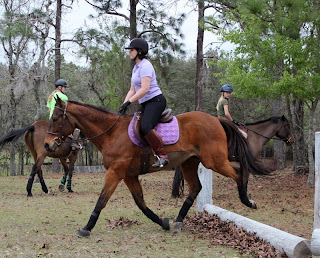The Great Bike Ride was, I hope, the first of many rides,
each one getting a little smoother. I admit that on this first ride, I felt
kind of silly. I *should* be able to ride a bike, right? I learned long (long)
ago. But right now, I do it kind of badly. And that’s OK. Doing things badly is
important, and you should be doing things badly, too. Want to know why?
If you never try
anything you’re not already good at, you’ll never learn anything new.
Maybe you’d like to learn to sketch, try salsa dancing, or bake
the perfect pie. If you’ve never tried it before, it’s likely that you won’t be
good. It’s the rare person who is
good at something the very first time he/she tries it (and you have my
permission to hate those people). If you never step outside your comfort zone
and risk doing things badly, you’ll never know if you even like to samba or how creative your sketches can be. (And if your
goal is the perfect pie, please call me—I’m willing to taste your experiments.)
Once you’ve tried something for the first time and you
decide you like it, guess what: you might still do it badly for awhile. Many,
many worthwhile and satisfying things take time to master. The point is, if
you’re not willing to do something badly, at least for a little while, you’ll
never know just how good you can be.
For me, horseback riding has been a prime example of doing
things badly. I recently saw a video of my first ride on Tank, and frankly I
was appalled (and I felt sorry for Tank). In the years I’ve had him, I’ve taken
many riding lessons and spent hours practicing, and I know I’m a much better
rider than I was then. Thankfully, I didn’t give up when I found that good
riding is much harder than it appears.
When you try your new things (and I write this to myself as
much as to you), be patient and don’t be embarrassed or self-conscious about
doing things badly. Realize you’re learning and expanding your horizons. Be
proud of your badness for badness, eventually, leads to goodness.
What would you like to do badly?
 |
| Still practicing... (Photo by Holly Bryan) |












